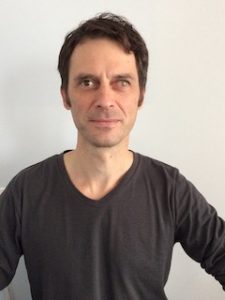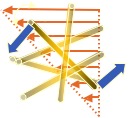Research Interests
Prof. Dr. M. Pavlik Lettinga
| Associate Professor at |  |

Pavlik Lettinga
Material properties depend on their building blocks, as well as its environment. Human blood will gel when it is not pumped thorough the veins, while one can only eat a jelly pudding when it is properly cooled. A multidisciplinary approach is a prerequisite to elucidate this complex interplay between structure and external fields.
We use building blocks with tuneable features from nature (filamentous virus, F-actin, …) and the lab (colloidal plates) to study their behaviour in and out of equilibrium. I apply experimental techniques like in situ ultra-fast confocal microscopy and Small Angle neutron and X-ray scattering mainly in combination with shear flow to access information on a single particle as well as ensemble level, thus facilitating direct comparison with theory and computer simulations. With this approach, I aim to expand the field of directed material design as well as to understand complex problems such as the break up process in blood flow.
| Structure in shear flow
Shear flow affects the microstructure order, induces new phases, and gives rise to instabilities. We focus on the flow response of anisotropic colloids (like red blood cells, filamentous viruses and platelets). |
 |
Diffusion in anisotropic matrices (present)
Uncovering the dynamics underlying the process of self-assembly is a requirement for a fundamental understanding of entropy driven structure formation. |
 |
| Phase behavior of complex mixtures
Composite materials mostly consist of polymer melts enriched by ‘fillers’. New materials will emerge when mixing colloids with different morphology. |
 |
Fun
The biggest challenge is often to translate pictures into numbers… |
|



